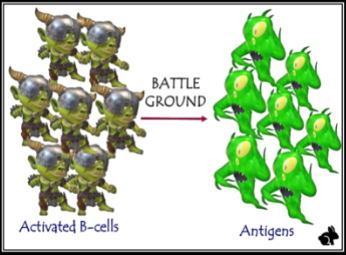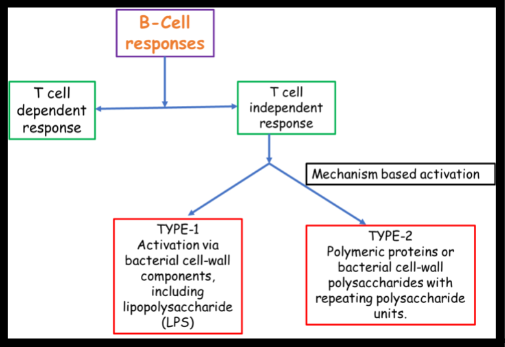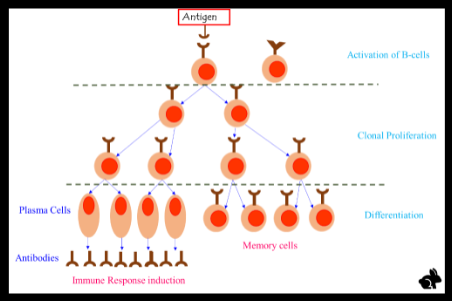What are B-cells?
B-cells are a variety of white blood cells that produce antibodies. B lymphocytes are immune cells that develop from stem cells in the bone marrow, also referred to as a B-cell.
There are two types of lymphocyte cells in the immune system. They are:
- B-cells or B-lymphocytes
- T-lymphocytes or T-cells are two types of T-cells.
Origination of B-cells
T and B-cells originate initially in the embryo from mesenchymal cells of the yolk sac and then move afterward in the liver and spleen. Lymphocytic stem cells are the progenitor cells. They eventually settle in the marrow of the bones. The process of hematopoiesis causes stem cells to divide and create lymphoblasts, which give rise to immature lymphocytes. Some of them enter the thymus and become thymocytes, which are then prepared for further processes while others undergo preconditioning in the liver during the embryonic stage and in the bone marrow. The cells which were preconditioned in the thymus were named T-cells and the cells which were preconditioned in the liver or bone marrow were named B-cells. Both the cells remain apart from each other. The lifespan of T-cells is 4-5years whereas the B-cells are short-lived with a lifespan of a few days.

How B-cells produce antibodies: Activation Process
A mature B-cell migrates from the bone marrow having membrane-bound immunoglobulin on the surface with a single antigenic specificity. These are naïve cells as they never encountered antigen before, circulate in the blood and lymph and reach the secondary lymphoid organs like the spleen and lymph nodes.
When our body is attacked by foreign particles or antigens, the immunoglobulin receptor which is present on the surface of the B-cells recognizes and specifically binds to the antigens leading to the activation which ultimately starts up the cascade of events like;
- First is the production of short-lived plasmablasts for immediate protection and long-lived plasma cells and memory B-cells for persistent protection via the process of differentiation. This step is also known as the extrafollicular response which takes place outside the lymphoid follicles.
- Further, the plasma cells work via producing antibodies to fight the infection. One type of plasma cell produces only a particular type of antibody and each plasma cell can produce 2000 molecules of an antibody per second or 20 trillion molecules per day.
Mechanism by which activation of B-cells Occurs
There are various mechanisms by which the activation of B-cells takes place and they are:
- T-cell dependent response
- T-cell independent response
The immune response that takes place via the activation of B-cells is called humoral or antibody-mediated immunity and the response that takes place via the activation of T-cells gives rise to cell-mediated immunity.

- T-cell dependent activation: The induction of immune response via the interaction of B-cell with the antigens is known as T-cell-independent activation. This activation occurs when the antigen binds to the specific surface receptor(IgM) present on B-cell. The engulfing of the antigen takes place via endocytosis leading to the presentation of antigenic part on the surface of the B-cell via Major histocompatibility complex proteins which are further recognized by helper T-cells, invigorating the generation of proteins that helps B-cells to proliferate and differentiate to form plasma cells.
- T-cell independent activation: The activation occurs without the direct participation of T cells. The response is much to antigens, in this case, is much stronger as it involves the generation of memory cells, affinity maturation and class switching.
Memory B-cell activation
The activation of the B-cell begins via detecting and binding to the target antigen which was showcased by the parent B-cell while encountering the antigens. As seen earlier, some of the B-cells don’t require T-cells for activation such as virus memory cells but few require the help of T-cells for the activation process to start. The B-cells start the production of plasma cells, which then give rise to huge amounts of soluble antibody.

Functions of B-cells
- B-cells can be activated with the help of antigens as well as T-helper cells.
- Abundance of plasma cells found in the endoplasmic reticulum employed to secrete antibodies.
- Each plasma cell can produce 2000 molecules of an antibody per second or 20 trillion molecules per day.






